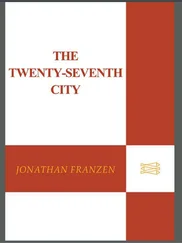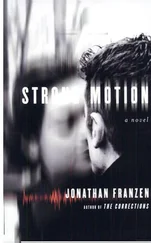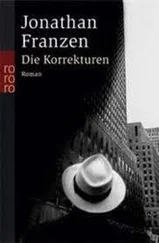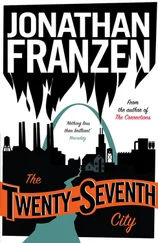Martin Beck, sitting with the telephone receiver to his ear, threw him an irritated glance, and Kollberg looked up from his papers and muttered gloomily, ‘As if we didn't know. Try thinking yourself on an empty stomach and see how easy it is.’
Having to go without a meal was one of the few things that could put Kollberg in a bad mood. By this time he had gone without at least three meals and was therefore particularly glum. Moreover, he thought he could tell from Gunvald Larsson's satisfied expression that the latter had just been out and had something to eat, and the thought didn't make him any happier.
‘Where have you been?’ he asked suspiciously.
Gunvald Larsson didn't answer. Kollberg followed him with his eyes as he went over and sat down behind his desk.
Martin Beck put down the phone.
‘What's biting you?’ he said.
Then he got up, took his notes and went over to Kollberg.
‘It was from the lab,’ he said. ‘They've counted sixty-eight fired cartridges.’
‘What calibre?’ Kollberg asked.
‘As we thought. Nine millimetres. Nothing to say that sixty-seven of them didn't come from the same weapon.’
‘And the sixty-eighth?’
‘Walther 7.65.’
‘The shot fired at the roof by that Kristiansson,’ Kollberg declared.
‘Yes.’
‘It means there was probably only one madman after all,’ Gunvald Larsson said.
‘Yes,’ said Martin Beck.
Going over to the sketch, he drew an X inside the widest of the middle doors.
‘Yes,’ Kollberg said. ‘That's where he must have stood.’
‘Which would explain …’
‘What?’ Gunvald Larsson asked.
Martin Beck didn't answer.
‘What were you going to say?’ Kollberg asked. ‘Which would explain …?’
‘Why Stenström didn't have time to shoot,’ Martin Beck said.
The others looked at him wonderingly.
‘Hungh-h,’ said Gunvald Larsson.
‘Yes, yes, you're right, both of you,’ Martin Beck said doubtfully and massaged the root of his nose between the thumb and forefinger of his right hand.
Hammar flung open the door and entered the room, followed by Ek and a man from the office of the public prosecutor.
‘Reconstruction,’ he said abruptly. ‘Stop all telephone calls. Are you ready?’
Martin Beck looked at him mournfully. It had been Stenström's habit to enter the room in exactly the same way, unexpectedly and without knocking. Almost always. It had been extremely irritating.
‘What have you got there?’ Gunvald Larsson asked. ‘The evening papers?’
‘Yes,’ Hammar replied. ‘Very encouraging.’
He held the papers up and gave them a hostile glare. The headlines were big and black but the text contained very little information.
‘I quote,’ Hammar said. ‘“‘This is the crime of the century,' says tough CID man Gunvald Larsson of the Stockholm homicide squad, and goes on: ‘It was the most ghastly sight I've ever seen in my life’.”’ Two exclamation marks.’
Gunvald Larsson heaved himself back in the chair and frowned.
‘You're in good company,’ said Hammar. ‘The minister of justice has also excelled himself. “The tidal wave of lawlessness and the mentality of violence must be stopped. The police have drawn on all resources of men and materials in order to apprehend the culprit without delay.”’
He looked around him and said, ‘So these are the resources.’
Martin Beck blew his nose.
‘“The direct investigation force already comprises more than a hundred of the country's most skilled criminal experts,”’ Hammar went on. ‘“The biggest squad ever known in this country's history of crime.”’
Kollberg sighed and scratched his head.
‘Politicians,’ Hammar mumbled to himself.
Tossing the newspapers on to the desk, he said, ‘Where's Melander?’
‘Talking to the psychologists,’ Kollberg said.
‘And Rönn?’
‘At the hospital.’
‘Any news from there yet?’
Martin Beck shook his head.
‘They're still operating,’ he said.
‘Well,’ Hammar said. ‘The reconstruction.’
Kollberg looked through his papers.
‘The bus left Bellmansro about ten o'clock,’ he said.
‘About?’
‘Yes. The whole timetable had been thrown off by the commotion on Strandvägen. The buses were stuck in traffic jams or police cordons, and as there were already big delays the drivers had been told to ignore the departure times and turn straight round at the last stops.’
‘By radio?’
‘Yes. This instruction had already been sent out to the drivers on route 47 by shortly after nine o'clock. On Stockholm Transport's own wavelength.’
‘Go on.’
‘We assumed that there are people who rode part of the way on the bus on this particular run. But so far we haven't traced any such witnesses.’
‘They'll turn up,’ said Hammar.
He pointed to the newspapers and added, ‘After this.’
‘Stenström's watch had stopped at eleven, three and thirty-seven,’ Kollberg went on in a monotone. ‘There is reason to presume that the shots were fired at precisely that time.’
‘The first or the last?’ Hammar asked.
‘The first,’ Martin Beck said.
Turning to the sketch on the wall, he put his right forefinger on the X he had just drawn.
‘We assume that the gunman stood just here,’ he said. ‘In the open space by the exit doors.’
‘On what do you base that assumption?’
‘The trajectories. The position of the fired cartridges in relation to the bodies.’
‘Right. Go on.’
‘We also assume that the murderer fired three bursts. The first forward, from left to right, thereby shooting all those sitting in the front of the bus-marked here on the sketch as numbers one, two, three, eight and nine. Number one stands for the driver and number two for Stenström.’
‘And then?’
‘Then he turned around, probably to the right, and fired the next burst at the four individuals at the rear of the bus, still from left to right, killing numbers five, six and seven. And wounding number four-Schwerin, that is. Schwerin was lying on his back at the rear of the aisle. We take this to mean that he had been sitting on the longitudinal seat on the left side of the bus and that he had time to stand up. He would therefore have been hit last.’
‘And the third burst?’
‘Was fired forward,’ Martin Beck said. ‘This time from right to left.’
‘And the weapon must be a submachine gun?’
‘Yes,’ Kollberg replied. ‘In all probability. If it's the ordinary army type –’
‘One moment,’ Hammar interrupted. ‘How long should this have taken? To shoot forward, swing right around, shoot backward, point the weapon forward again and empty the magazine?’
‘As we still don't know what kind of weapon he used –’ Kollberg began, but Gunvald Larsson cut him off.
‘About ten seconds.’
‘How did he get out of the bus?’ Hammar asked.
Martin Beck nodded to Ek and said, ‘Your department.’
Ek passed his fingers through his silvery hair, cleared his throat and said, ‘The door that was open was the rear entrance door. In all likelihood the murderer left the bus that way. In order to open it he must first move straight forward along the aisle to the driver's seat, then stretch his arm over or past the driver and push a switch.’
He took out his glasses, polished them with his handkerchief and went over to the wall.
‘I've had two instruction sketches blown up here,’ he said. ‘One showing the instrument panel in its entirety, the other showing the actual lever for the front doors. On the first sketch the switch for the door circuits is marked with number 15 and the door lever with number 18. The lever is therefore to the left of the wheel, in front of and obliquely below the side window. The lever itself, as you see from the second sketch, has five different positions.’
Читать дальше












